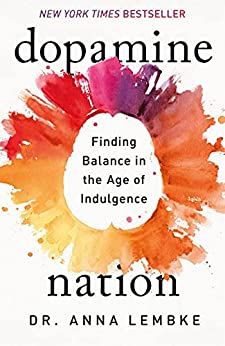More on this book
Community
Kindle Notes & Highlights
Even acts of kindness toward others are framed as a strategy for personal happiness. Altruism, no longer merely a good in itself, has become a vehicle for our own “well-being.”
My patient Kevin, nineteen years old, was brought to see me by his parents in 2018. Their concerns were the following: He wouldn’t go to school, couldn’t keep a job, and wouldn’t follow any of the household rules.
His parents were as imperfect as the rest of us, but they were trying hard to help him. There was no evidence of abuse or neglect. The problem was they seemed unable to put any constraints on him. They worried that by making demands, they would “stress him out” or “traumatize him.” Perceiving children as psychologically fragile is a quintessentially modern concept. In ancient times, children were considered miniature adults, fully formed from birth. For most of Western civilization, children were regarded as innately evil. The job of parents and caregivers was to enforce extreme discipline in
...more
But I worry that we have both oversanitized and over-pathologized childhood, raising our children in the equivalent of a padded cell, with no way to injure themselves but also no means to ready themselves for the world. By protecting our children from adversity, have we made them deathly afraid of it? By bolstering their self-esteem with false praise and a lack of real-world consequences, have we made them less tolerant, more entitled, and ignorant of their own character defects?
tolerate even minor forms of
The net effect is that we now need more reward to feel pleasure, and less injury to feel pain.
The smartphone requires us to scroll through pages and tap on screens, cleverly exploiting ancient habits of repetitive motion, possibly acquired through centuries of grinding wheat and picking berries.
Alex Honnold, now world-famous for climbing the face of Yosemite’s El Capitan without ropes, was found to have below-normal amygdala activation during brain imaging. For most of us, the amygdala is an area of the brain that lights up in an fMRI machine when we look at scary pictures.
What’s different now is that he has trained his brain through years of climbing not to react to fearful stimuli.
Extreme sports— skydiving, kitesurfing, hang gliding, bob-sledding, downhill skiing/snowboarding, waterfall kayaking, ice climbing, mountain biking, canyon swinging, bungee jumping, base jumping, wingsuit flying—slam down hard and fast on the pain side of the pleasure-pain balance. Intense pain/ fear plus a shot of adrenaline creates a potent drug.
A study of skydivers compared to a control group (rowers) found that repeat skydivers were more likely to experience anhedonia, a lack of joy, in the rest of their lives. The authors wrote that “skydiving has similarities with addictive behaviors and that frequent exposure to ‘natural high’ experiences is related to anhedonia.” I would hardly call jumping out of an airplane at 13,000 feet a “natural high,” but I do agree with the author’s overall conclusion: Skydiving can be addictive and can lead to persistent dysphoria if engaged in repeatedly.
Riches and celebrity, another dimension of our dopamine economy, contribute to the addictive potential of these extreme sports. “Overtraining syndrome” is a well-described but poorly understood condition among endurance athletes who train so much that they reach a point where exercise no longer produces the endorphins that were once so plentiful. Instead, exercise leaves them feeling depleted and dysphoric, as if their reward balance has maxed out and stopped working, similar to what we saw with my patient Chris and opioids.
But if we consume just the right amount, “inhibiting great pain with little pain,” we discover the path to hormetic healing, and maybe even the occasional “fit of joy.”
Telling the truth draws people in, especially when we’re willing to expose our own vulnerabilities.
When our lived experience diverges from our projected image, we are prone to feel detached and unreal, as fake as the false images we’ve created.
The antidote to the false self is the authentic self. Radical honesty is a way to get there. It tethers us to our existence and makes us feel real in the world. It also lessens the cognitive load required to maintain all those lies, freeing up mental energy to live more spontaneously in the moment.


